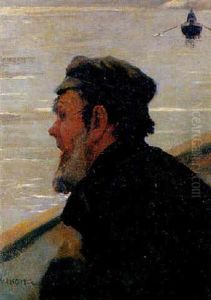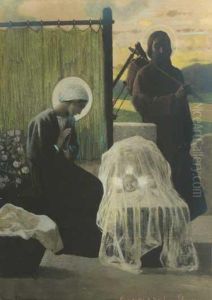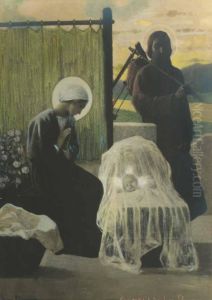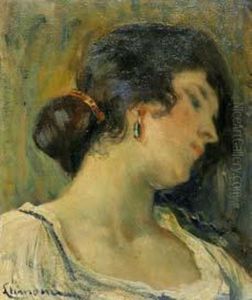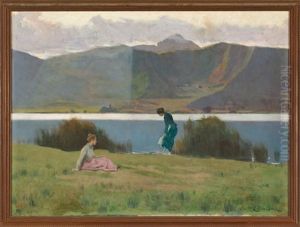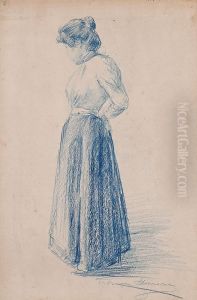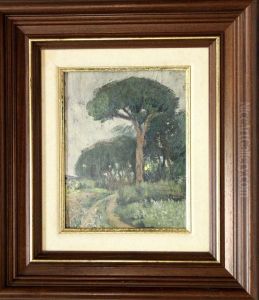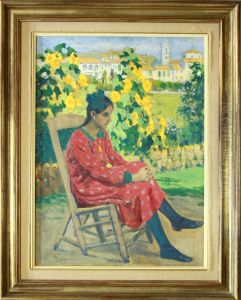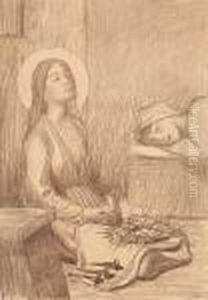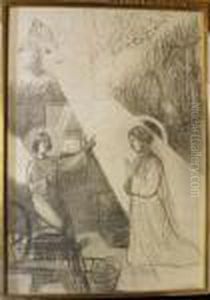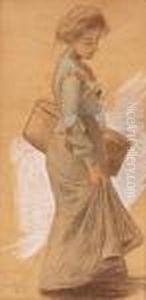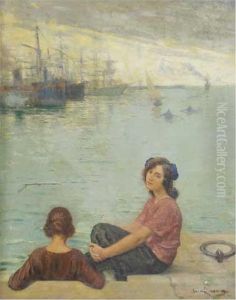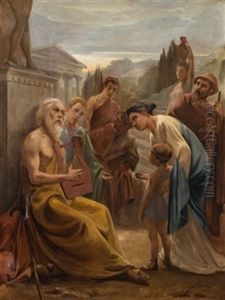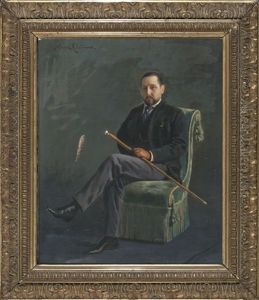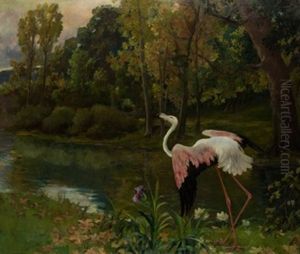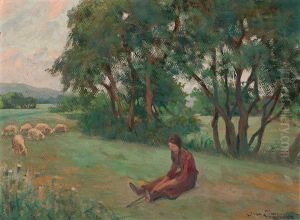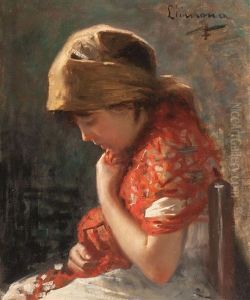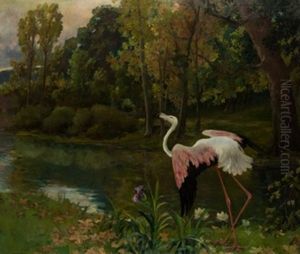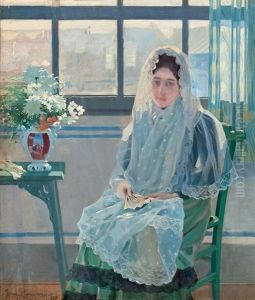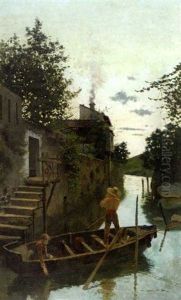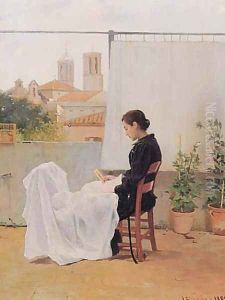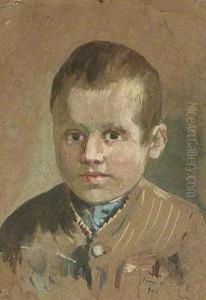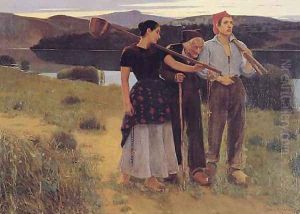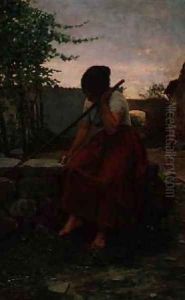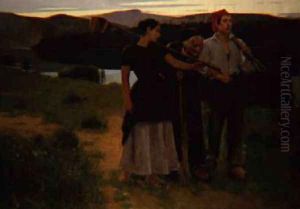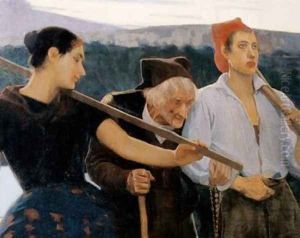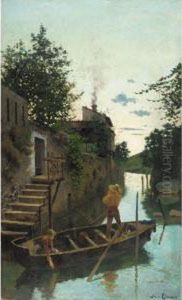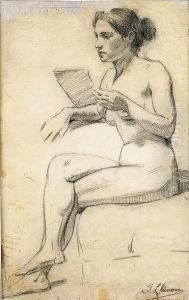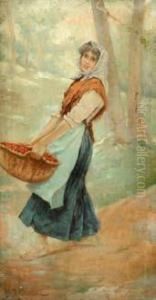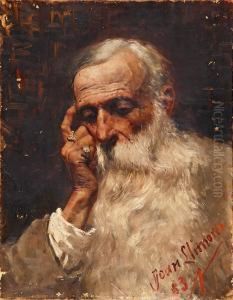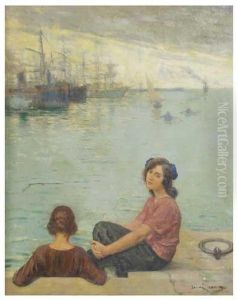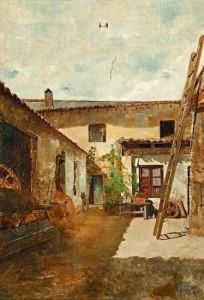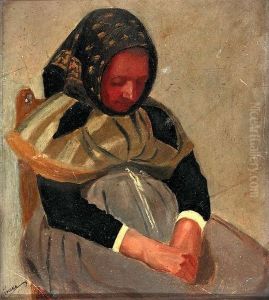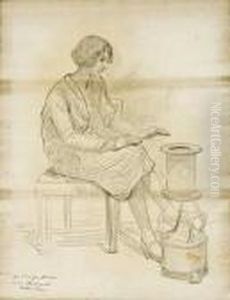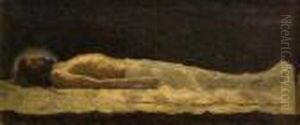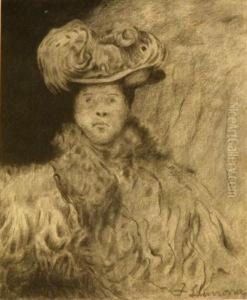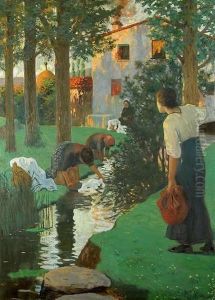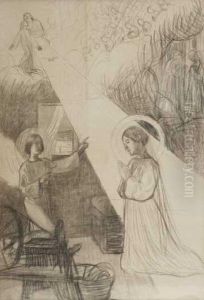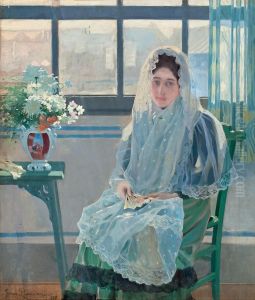Joan Llimona y Bruguera Paintings
Joan Llimona i Bruguera was a prominent Catalan painter and illustrator, born in Barcelona, Spain, on August 24, 1860. He is often associated with the Catalan Modernisme movement, which is the regional expression of the wider Art Nouveau movement that swept through Europe at the end of the 19th century. Llimona's contribution to the arts is marked by his devout religious beliefs, which heavily influenced his work.
During his early years, Joan Llimona showed an aptitude for art, and this led him to study at the Escola de la Llotja in Barcelona, where he was taught by artists such as Antoni Caba and Claudi Lorenzale. Seeking to further his education and experience, Llimona traveled to Rome in 1880, which was a turning point in his career. The time he spent in Italy exposed him to Renaissance masters and deepened his appreciation for religious and historical subjects, which would become a central theme in his work.
Llimona returned to Barcelona in 1882 and became involved with the Catalan Renaixença, a cultural revival movement of the late 19th century that sought to reclaim Catalan identity and heritage. He was also a co-founder of the Colla del Safrà, a group of artists who painted in the open air. His work during this period was characterized by a realist style, but with time, he adopted a more symbolist approach, often blending spiritual and mystical elements with a modernist sensibility.
Throughout his career, Llimona received numerous commissions for religious works, including altarpieces and murals for churches, which are considered some of his most significant contributions to art. His paintings often depicted serene, elongated figures that evoked a sense of piety and contemplation. Llimona's reputation as a devout and skilled religious painter was well-established in his lifetime, and he worked tirelessly to create art that reflected his spiritual convictions.
In addition to his paintings, Joan Llimona was also an accomplished illustrator, contributing to various publications and books. His illustrations further showcased his dedication to religious and historical themes, and these works were an integral part of the visual culture of his time.
Joan Llimona i Bruguera passed away on June 4, 1926, in Barcelona. Today, he is remembered as a key figure in the Catalan art scene of the late 19th and early 20th centuries, with his works held in high esteem both in Spain and internationally. His legacy lives on through his contributions to religious art and his role in shaping the Catalan Modernisme movement.
